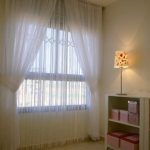The 1940s era was a time of elegance and sophistication, particularly when it came to home decor. In this article, we will delve into the charming world of 1940s home decor, focusing specifically on the living room. From color schemes to furniture pieces, textiles, lighting fixtures, accessories, and layout arrangements, we will explore how the essence of 1940s style can be incorporated into modern living spaces.
The living room in a 1940s home was often a hub of social activity and a showcase of refined taste. Popular color palettes included warm neutrals like ivory, beige, and taupe, accented with rich jewel tones such as emerald green or sapphire blue. These colors created an inviting and cozy atmosphere that welcomed guests with open arms. The use of bold patterns and intricate designs in textiles played a significant role in adding character to the space.
Iconic furniture pieces from the 1940s era were characterized by sleek lines, curved edges, and tapered legs. Velvet sofas and armchairs exuded luxury while wooden coffee tables with geometric shapes added a touch of modernity. Lighting fixtures such as chrome floor lamps or brass chandeliers illuminated the room with a soft ambient glow. Accessories like porcelain figurines and art deco clocks were carefully placed to enhance the overall aesthetic appeal of the living room.
Color Palette
The 1940s era was known for its distinct color schemes that added charm and character to living room decor. One of the popular color palettes during this time included warm, earthy tones such as olive green, mustard yellow, and burnt orange.
These hues brought a sense of coziness and warmth to the living space, creating a welcoming atmosphere for family and guests alike. Additionally, pastel shades like soft pinks, powder blues, and mint greens were also commonly used in 1940s home decor to add a touch of lightness and femininity to the room.
Incorporating these 1940s color schemes into modern living rooms can evoke a sense of nostalgia and timeless elegance. By choosing paint colors or upholstery in these vintage hues, homeowners can recreate the classic look of a 1940s living room while adding a unique twist to their interior design. Pairing rich earth tones with pastel accents can create a balanced and harmonious color palette that sets the tone for a cozy and inviting space.
When choosing colors inspired by 1940s home decor for your living room, consider incorporating them through walls, furniture pieces, textiles, and accessories. Mixing different shades from the same era can create depth and visual interest in the room while staying true to the vintage aesthetic. Whether you opt for bold earthy tones or delicate pastels, embracing the color palette of the 1940s can transform your living room into a stylish homage to this iconic era.
| Color Palette Inspiration | Description |
|---|---|
| Warm Earthy Tones | Olive green, mustard yellow, burnt orange |
| Pastel Shades | Soft pinks, powder blues, mint greens |
Furniture
The 1940s era brought about a unique style in home decor, and the living room was no exception. Furniture played a crucial role in defining the aesthetic of this period, with certain iconic pieces that have since become synonymous with 1940s home decor.
Upholstered Sofas and Armchairs
One of the standout features of 1940s living room furniture was the emphasis on comfort and luxury. Upholstered sofas and armchairs in rich fabrics like velvet or brocade were popular choices during this time. These pieces often featured elegant curves, tufted backs, and intricate details that exuded sophistication and glamour. Matching sets were common, creating a cohesive look in the living room.
Streamlined Coffee Tables
Another notable furniture piece that defined 1940s living room decor was the streamlined coffee table. These tables often had sleek lines, geometric shapes, and minimalistic designs that reflected the influence of Art Deco and Moderne styles. Materials like glass, metal, and wood were commonly used to create these coffee tables, adding a touch of modernity to the overall look of the space.
Secretary Desks and Bookcases
Incorporating functional yet stylish pieces like secretary desks and bookcases was also characteristic of 1940s living room furniture. These items served both practical purposes for storage and display while adding an air of sophistication to the room. Secretary desks often featured drop-down compartments for writing or working, while bookcases showcased architectural details like molding or glass doors. The combination of functionality and elegance made these pieces essential in completing the overall ambiance of a 1940s style living room.
Textiles and Fabrics
The 1940s was a decade characterized by its unique approach to home decor, especially in the living room. One of the key elements that defined the era’s interior design style was the use of textiles and fabrics that added warmth and personality to living spaces. Floral prints, velvets, and chenille were among the most popular choices for upholstery, curtains, and throw pillows in 1940s home decor.
Floral prints played a significant role in bringing a touch of nature indoors during the 1940s. Large-scale floral patterns in vibrant colors like red, yellow, and blue were commonly seen on upholstery and drapery, adding a cheerful and lively ambiance to living rooms. These flowery designs often evoked a sense of nostalgia and comfort, making them a staple in many households seeking a cozy and inviting atmosphere.
Additionally, velvets and chenille were favored for their luxurious textures and rich colors that exuded elegance and sophistication in 1940s living rooms. Velvet sofas or armchairs in deep jewel tones like emerald green or sapphire blue were coveted pieces of furniture that not only provided comfort but also added a touch of opulence to the space. Chenille throws or cushions complemented these velvet pieces beautifully, creating layers of texture that enhanced the overall aesthetic appeal of the living room.
| Feature | Description |
|---|---|
| Floral Prints | Large-scale patterns in vibrant colors added a cheerful ambiance |
| Velvets | Luxurious textures in rich jewel tones brought elegance to furniture pieces |
| Chenille | Soft fabric used for throws or cushions that added layers of texture |
Lighting
Chandeliers and Sconces
One of the defining features of 1940s home decor in the living room was the use of elegant lighting fixtures such as chandeliers and wall sconces. Chandeliers during this era often featured intricate designs with glass or crystal accents that exuded luxury and sophistication. These fixtures added a touch of glamour to the living room, creating a warm and inviting ambiance. Wall sconces placed strategically around the room provided additional lighting and contributed to the overall aesthetic of 1940s decor.
Table Lamps
Table lamps played a crucial role in illuminating the living room while also serving as decorative pieces in their own right. In the 1940s, table lamps were crafted from materials like brass, ceramic, or glass, often featuring unique shapes and vibrant colors.
With their artful designs and soft lighting, these lamps added a cozy atmosphere to 1940s living rooms. Placing table lamps on side tables or consoles allowed for customizable lighting options that could be adjusted to suit different moods and occasions.
Floor Lamps
Floor lamps were another popular lighting choice in 1940s living rooms, providing both ambient light and serving as focal points in the space. Floor lamps in the 1940s were characterized by slender profiles with streamlined shades that emitted a soft glow.
These lamps often featured metal finishes or wooden accents that complemented the overall decor of the room. Positioning floor lamps strategically around seating areas enhanced the cozy feel of the living room while adding an element of style and sophistication reminiscent of 1940s home decor trends.
Accessories
The 1940s era is known for its charming and unique home decor styles, especially when it comes to the living room. One of the key aspects that added personality and charm to 1940s living rooms was the use of accessories. These decorative elements played a significant role in enhancing the overall ambiance and aesthetic of homes during that time period.
When it came to accessorizing a living room in a 1940s style, porcelain figurines were a popular choice. These delicate and ornate figurines added a touch of elegance and sophistication to the space. Vintage radios were also iconic accessories that not only served a functional purpose but also added a nostalgic appeal to the room. Additionally, art deco clocks were frequently used as decorative pieces, showcasing intricate designs and capturing the essence of the era’s artistic influences.
To truly bring the essence of 1940s home decor into your living room, consider incorporating these accessories in your space:
- Porcelain figurines with intricate detailing and vibrant colors
- Vintage radios in classic designs or bold colors
- Art deco clocks featuring geometric shapes and metallic finishes
By carefully selecting and arranging these accessories in your living room, you can create a cohesive look that pays homage to the stylish and elegant decor of the 1940s. Each accessory tells a story and adds character to your space, making it feel like a step back in time while still maintaining a timeless appeal.
Layout and Arrangement
In a 1940s style living room, the layout and arrangement play a crucial role in capturing the essence of that era. Here are some tips on how to arrange furniture and decor to create a nostalgic ambiance reminiscent of the 1940s:
1. Consider the flow of the space: In a typical 1940s home, living rooms were designed for socializing and entertaining guests. To replicate this layout, arrange your furniture in a way that promotes conversation and interaction. Place seating areas facing each other to encourage face-to-face communication, creating a warm and inviting atmosphere.
2. Embrace symmetry: Symmetry was a hallmark of 1940s interior design, so try to balance your furniture arrangement by mirroring pieces on either side of the room. Position matching armchairs or side tables at equal distances from the center of the room to achieve a harmonious look that reflects the classic style of the era.
3. Focus on key focal points: In 1940s living rooms, focal points like fireplaces or statement artworks drew attention and anchored the room’s design. When arranging your furniture, identify these focal points and orient your seating around them to create a cohesive design scheme. Highlight architectural features such as molding or built-in shelving by positioning furniture accordingly, enhancing the overall elegance of your living room decor.
By following these tips on layout and arrangement inspired by 1940s home decor, you can transform your living room into a stylish retreat that exudes vintage charm and timeless sophistication. Incorporate elements like rich color palettes, iconic furniture pieces, and elegant lighting fixtures to complete the look and transport yourself back to the glamour of the 1940s.
Modern Interpretations
The charm of 1940s home decor can bring a touch of nostalgia and elegance to any living room. From the color palette to the furniture pieces, textiles, fabrics, lighting fixtures, and accessories, the design elements of this era hold a timeless appeal. By incorporating these vintage touches into a contemporary living room, you can create a unique and sophisticated space that merges the best of both worlds.
When it comes to integrating 1940s home decor elements into a modern living room, there are various ways to do so. Consider using a popular color scheme from the era such as pastel shades or bold jewel tones as accents in your space.
Mix iconic furniture pieces like streamlined sofas with plush armchairs to achieve a perfect balance between comfort and style. Incorporating fabrics like floral prints or velvet can add texture and warmth to your living room, giving it an inviting ambiance reminiscent of the 1940s.
To truly capture the essence of 1940s home decor in your contemporary living room, pay attention to lighting and accessories. Opt for elegant lighting fixtures inspired by Art Deco designs or vintage radios as decorative elements that pay homage to the past.
Arrange porcelain figurines or art deco clocks strategically around your living room for an added touch of authenticity. By carefully curating every detail within your space, you can create a modern interpretation of 1940s home decor that is both stylish and nostalgic.
Frequently Asked Questions
What Was the Decorating Style of the 1940s?
The decorating style of the 1940s was largely influenced by the aftermath of the Great Depression and World War II. This era was characterized by a sense of optimism and renaissance, leading to a shift towards more cheerful and colorful interiors.
Homes were often decorated in a mix of traditional, eclectic, and modern styles, with an emphasis on functionality and simplicity.
What Were the Colors of Furniture in the 1940s?
The colors of furniture in the 1940s were typically warm and inviting. Earthy tones like browns, tans, greens, and blues were commonly used to create a cozy feel in homes. Pastel shades like peach, mint green, and baby blue also gained popularity during this time, adding a touch of softness to furniture pieces.
What House Style Was Popular in the 40s?
The house style that was popular in the 40s was the bungalow. Bungalows are single-story homes with low-pitched roofs and open floor plans that provide a cozy and inviting living space.
These houses often featured elements of Arts and Crafts design, such as built-in cabinetry, natural materials, and simple lines that reflected the desire for practicality and comfort during this era.

I’m thrilled to be your companion on this exciting journey through the world of home decor and design. With a passion for turning houses into homes and a keen eye for the finer details, I’m here to help you transform your living spaces into beautiful, functional, and meaningful havens.





